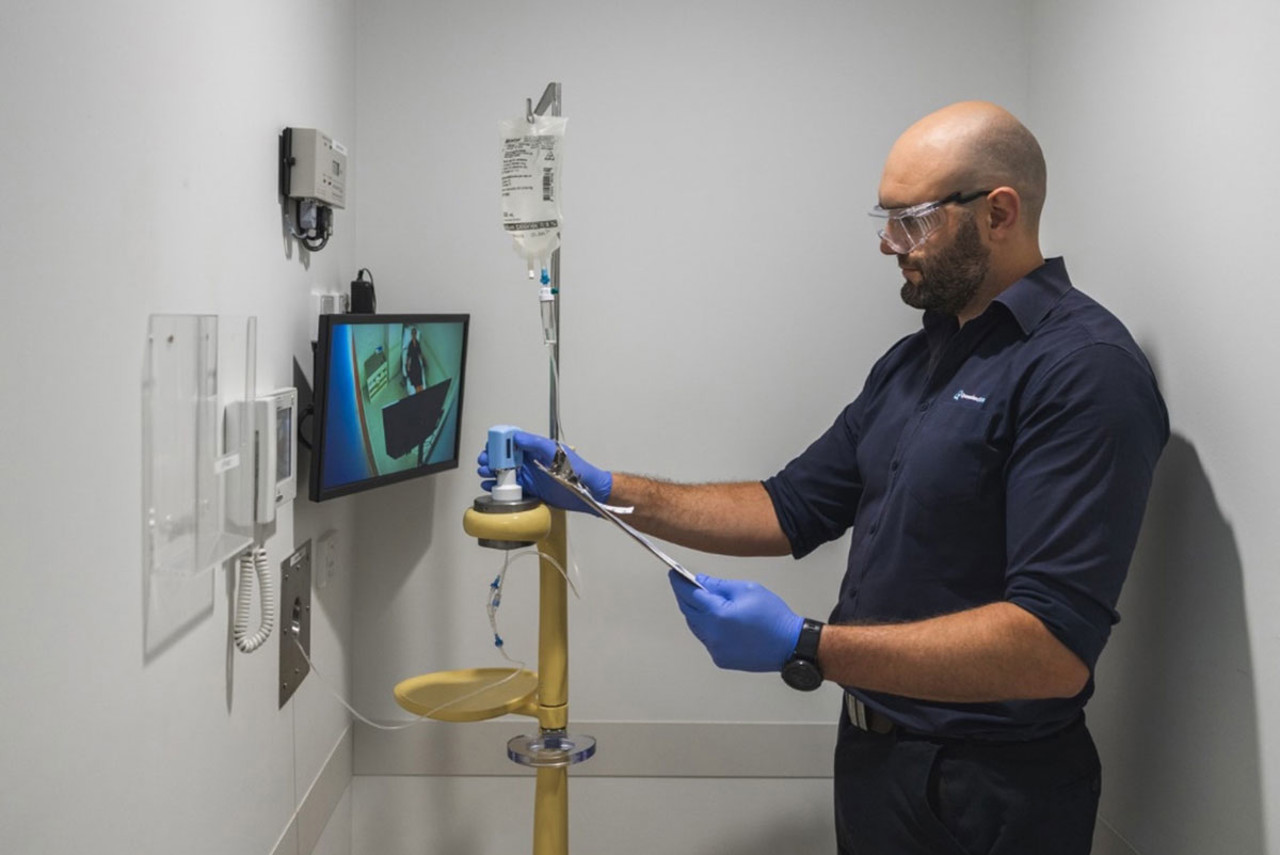A pharmaceutical (PSMA-11) is labelled with a radioactive isotope (Ga-68 or F-18) to target cellular receptors on the surface of prostate cancer cells. This tracer is injected into the blood stream where it readily attaches to prostate cancer cells and emits its radioactive signal. After a short period of time to allow for tracer uptake, a nuclear medicine technologist uses one of our state-of-the-art PET/CT scanners to determine the quantity and location of this tracer within the body.
The information gathered during a PSMA PET scan is extremely valuable to the treating physician and aids in determining the best course of action. Furthermore, it can be used as a baseline from which to measure a patient's response to various treatments.
PSMA PET scan FAQs
-
Unlike other PET scans, a PSMA PET scan requires very little preparation. It is important that you are well hydrated prior to your scan, however there is no requirement to fast for a PSMA PET scan.
-
ARRIVAL (15-30 MINS)
When you arrive for your appointment, our reception staff will ask that you complete a questionnaire and sign a consent form. In line with your appointment time a Registered Nurse will welcome you through for the procedure. Please be mindful that some patients take longer than others to get settled and your appointment time may vary.TRACER UPTAKE (45-60 MINS)
Once you have changed into a gown our nurse will get you settled in a private uptake room. They will explain the procedure, go through your recent medical history, and place an IV cannula into your arm. An IV line will be connected to your cannula, through which the PET tracer will be injected. At this point you will be left to watch TV and relax while the tracer is infused. After approximately one hour of rest, we’ll take you through to the PET/CT scanner.PET/CT IMAGING (20-30 MINS)
The PET/CT scanner looks like a doughnut (known technically as a gantry), with a bed passing through the middle. You will be asked to lie on the bed with your arms stretched above your head as it moves through the opening in the gantry.- The PET part of the scan detects the radiation released from the tracer which has now been taken up throughout your body. [15-20mins]
- The CT part images your anatomy and alterations in its structure such as tumour growth and other changes related to disease. [5-10mins]
- The PET and CT images are then combined and used together to stage, plan, or measure treatment outcomes.
POST IMAGING (20-45 MINS)
Following your scan you will be offered something to eat, be encouraged to stay well hydrated and to use the bathroom as required. We will monitor you for 15 minutes following the CT contrast injection and then remove your IV line. During this time we will process your images.The radioactive tracer remains in your system for a short time following your scan, for this reason we suggest you limit the time you spend near children and pregnant women for a few hours afterwards.
-
A PSMA PET scan may take up to 3 hours to complete. Please refer to the above item 'What will happen during my appointment' for more information.
-
Queensland X-Ray has the latest nuclear medicine equipment, with PET/CT available in most regions.
A nuclear medicine technologist will perform your PSMA PET scan, with support from a registered nurse, and under the supervision of a nuclear medicine specialist.
The images the technologist acquires are reviewed by a specialist who reports on the findings. The report will be sent to your referring doctor, who will explain the findings to you. Technologist(s) performing the scan do not discuss scan results with you.
How much will it cost?
Fees for radiology procedures will vary depending on a variety of factors. We will advise you about the cost of your service at the time of booking but if you do have any questions, contact us and one of our team will be happy to help with your query. You can read more about our billing information here.
How do I access my images?
At Queensland X-Ray, we provide our patients with their images and results online. To access your images and results, you’ll need to register for an account when you visit one of our practices. If you’ve already registered, you can access the Patient Portal here.

